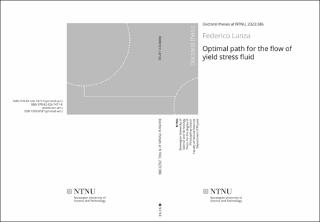| dc.description.abstract | Numerous real-world applications depend on understanding how liquids or gases flow through the tiny holes of materials like soil or rocks, called “porous media”. These applications range from cleaning up polluted groundwater to trapping carbon dioxide emissions. Some liquids are special because they don't flow unless you push them with enough force. Mayonnaise or toothpaste are two common examples of these substances, which we call "yield stress fluids”. Moreover, there are liquids, like water and oil, that don't mix when they come into contact, since there are tiny forces that make them separate from each other; these liquids are defined as “immiscible fluids”. In this work we try to study how yield stress fluids and immiscible fluids move when they are inside porous materials. Unlike experimental researches, where scientists wearing white coats deal with real fluids in laboratories, here we perform a theoretical investigation. This means that we find mathematical equations able to predict the behavior of these fluids, and we solve them either by paper and pen or using a computer. The present work includes three different projects. In the first one, we look at how droplets of yield stress fluids move through tiny tubes filled with a normal liquid like water, when you push them hard enough. The second project concerns how a yield stress fluid displaces through a network of tiny pathways that look like tree branches. In both these projects, we figure out how much force you need to make the liquids start moving, and how fast they move once they do. In the last project, we investigate how foam can be created and displaced when two immiscible fluids move in a porous material. | en_US |
